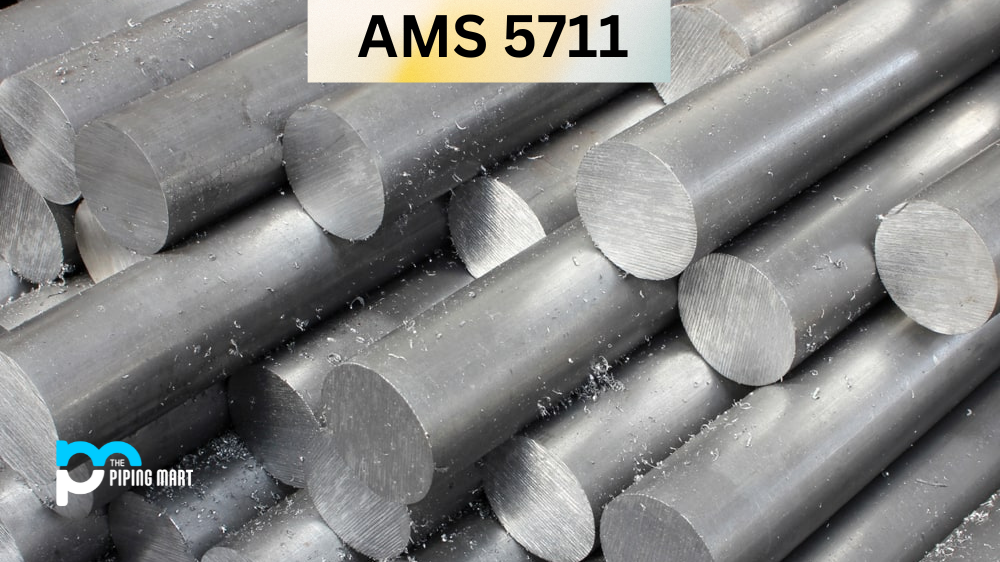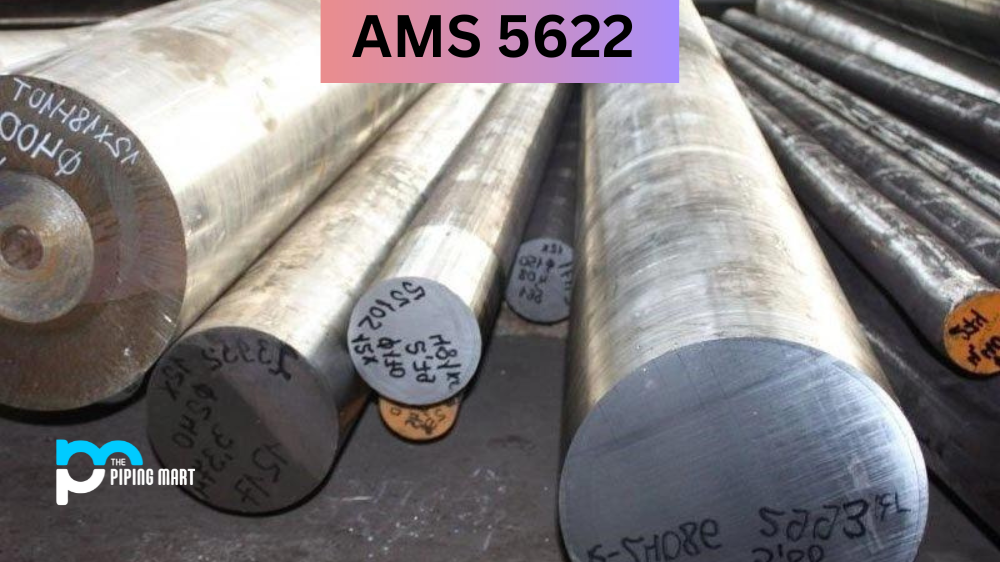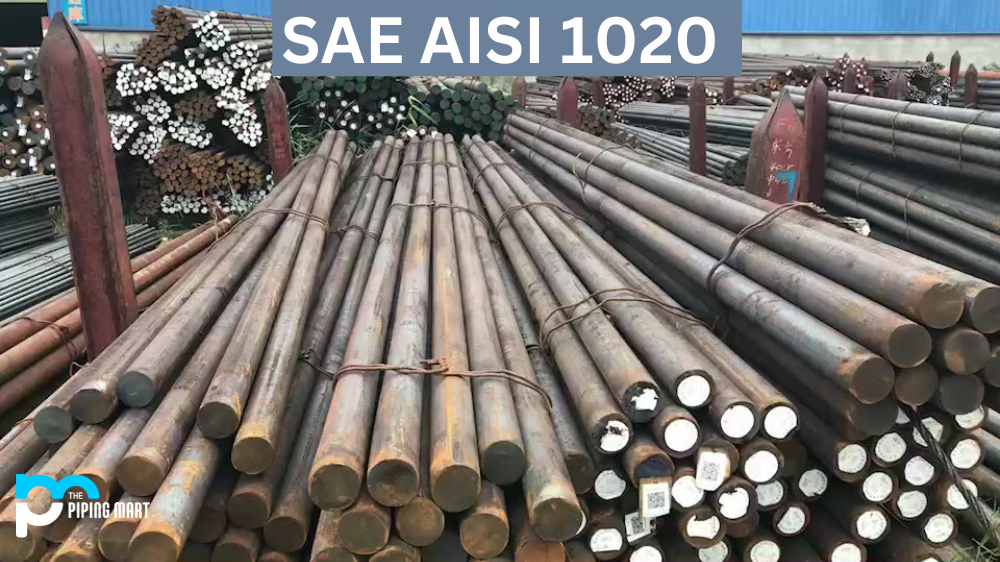If you are a materials engineer or involved in the manufacturing industry, you have probably come across AMS 5711. AMS 5711 is austenitic stainless steel highly resistant to corrosion and wear. It has several applications in various industries, including aerospace, defence, and medical. This blog post will explore everything you need to know about AMS 5711, from its composition and physical and mechanical properties to its uses.
What is AMS 5711?
AMS 5711 (also known as Hastelloy S Alloy) is an alloy steel specification for aircraft and gas turbine components, specifically for bolts, nuts, and studs. It has good strength and corrosion resistance at elevated temperatures making it a popular choice in aerospace engineering.
AMS 5711 Composition
AMS 5711 comprises iron, chromium, nickel, and small amounts of carbon, manganese, silicon, sulfur, and phosphorus. The steel has a chemical composition of 0.07% maximum carbon, 1.00% maximum manganese, 2.0% maximum silicon, 20.0% to 22.0% chromium, 11.0% to 13.0% nickel, and trace amounts of sulfur and phosphorus.
| Elements | Content (%) |
|---|---|
| Nickel, Ni | 67 |
| Chromium, Cr | 14.5 – 17 |
| Molybdenum, Mo | 14 – 16.5 |
| Iron, Fe | 3 |
| Cobalt, Co | 2 |
| Tungsten, W | 1 |
| Copper, Cu | 0.35 |
| Manganese, Mn | 0.30 – 1.0 |
| Silicon, Si | 0.20 – 0.75 |
| Aluminum, Al | 0.10 – 0.50 |
| Carbon, C | 0.020 |
| Phosphorous, P | 0.020 |
| Boron, B | 0.015 |
| Sulfur, S | 0.015 |
| Lanthanum, La | 0.010 – 0.10 |
AMS 5711 Physical Properties
AMS 5711 has excellent physical properties, making it a popular choice in various industries. It has a density of 7.90 g/cm3, a melting point of 1400°C, and a thermal conductivity of 15 W/m-K. Additionally, the steel has high corrosion resistance, particularly against sulfuric and phosphoric acids.
| Properties | Metric | Imperial |
|---|---|---|
| Density | 8.75 g/cm³ | 0.316 lb/in³ |
| Melting point | 1360°C | 2480°F |
AMS 5711 Mechanical Properties
The mechanical properties of AMS 5711 make it highly suitable for use in high-stress applications. It has a yield strength of 760 MPa, a tensile strength of 930 MPa, and an elongation of 15%. Moreover, the steel has high toughness, ductility, and good weldability.
| Properties | Metric | Imperial |
|---|---|---|
| Tensile strength (@ 1093°C/1999°F, thickness 1.10-1.60 mm/0.0433-0.0630 in.) | 110 MPa | 16000 psi |
| Yield strength (@ 1093°C/1999°F, thickness 1.10-1.60 mm/0.0433-0.0630 in., 0.2% offset) | 52 MPa | 7540 psi |
| Elastic modulus | 212 GPa | 30700 ksi |
| Elongation at break (@ 982°C/1800°F, thickness 1.10-1.60 mm/0.0433-0.0630 in., in 50.8 mm) | 46% | 46% |
| Charpy Impact (V Notch; solution heat-treated, not aged) | 190 J | 140 ft-lb |
AMS 5711 Equivalents
- AMS 5838
- AMS 5873
AMS 5711 Uses
AMS 5711 has several applications in different industries. It is commonly used to manufacture aircraft components such as bearings, compressors, and structural parts. It is also used in the medical field to make surgical implants and other prosthetic devices. Furthermore, steel is used in manufacturing chemical and petrochemical equipment and the nuclear and defence industries.
AMS 5711 Hardness
AMS 5711 has a hardness of 234 HB, which makes it a very hard steel. The hardness of AMS 5711 is due to its high chromium content, which enhances its strength and wear resistance. Additionally, the steel has a high corrosion resistance even in harsh environments, making it an ideal choice for industrial and aerospace applications.
AMS 5711 Heat treatment
The heat treatment of AMS 5711 involves an annealing process, which helps improve its ductility and toughness. The steel is heated to a temperature of between 850°C to 900°C and then cooled slowly in a furnace. Alternatively, the steel can be quenched in oil or water to enhance strength and hardness.
Conclusion
In conclusion, AMS 5711 is a type of austenitic stainless steel with excellent physical and mechanical properties, making it highly suitable for various industrial applications. Its high corrosion resistance, particularly to sulfuric and phosphoric acids, and its high strength, toughness, and flexibility, make it an ideal choice for high-stress applications. As such, manufacturers in several industries, including aerospace, defence, and medical, rely on this steel to manufacture critical components and parts.

Pipingmart is a B2B portal that specializes in metal, industrial and piping items. Additionally, we share the latest information and information about materials, products and various types of grades to assist businesses that are involved in this business.




